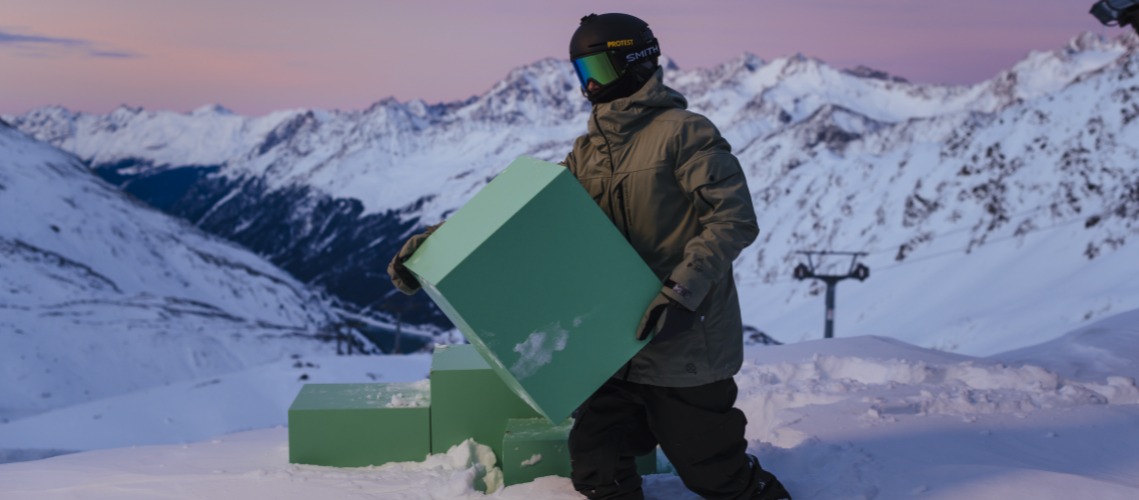Protest Greens Up

Protest is on a journey to save the planet with their Green Up path to sustainability. They say:
We’re on our journey to Green Up! What is Green Up? It’s our path to sustainability; it’s our verb to describe what we’re striving for – greener production, greener products for a greener planet! The journey isn’t easy so we’re taking it step by step. Join us. Set a goal, but don’t try to get therein one leap. Break your journey up into blocks that you can build on. One block on top of another, forming the path to sustainability. Together, Let’s Green Up!
PFC - FREE
We have set the ambitious goal of replacing all PFCs in our collection with eco-friendly alternatives by the year 2022. PFCs in swimwear are used to help the fabric repel water and to aid in the drying process of both swimwear and the foam pads that are sometimes placed in swimsuits and bikinis. PFCs are also used to waterproof outerwear garments, making them oil and dirt repellent. PFC’s are virtually non-degradable in nature and are building up more and more in our food chain. By removing the use of PFCs in our garments, we are making a conscious choice to help limit the damaging effects that these chemicals are having on the environment, animal and human health. After some research we found a replacement to PFC, which also offers water resistance and breathability aids in the drying process. Our new hydrophobic finish is inspired by water resistance found in nature and is based on fluorine-free recipe. All of our men’s boardshorts and women’s and kids’ swimwear is PFC-free.
Material guide
Here at Protest we use superior, technical fabrics in the creation of our clothes. As part of our journey to Green Up, we are now sourcing innovative and sustainable materials that leave a smaller footprint. Here are the up-cycled fabrics that we are using this summer.
- Recycled Pet - Used in all of our boardshorts. Polyester is an important component in our clothing, which is durable, flexible and water resistant. A big problem with polyester is that there is an overabundance of this plastic, filling up landfills and polluting our oceans. So, to address this issue, instead of using new polyester in our garments, we use recycled polyester created by processing discarded P.E.T (polyethylene Terephthalate) bottles into fabric. We’re using this recycled product in swimwear, outer fabric, lining and to create fleece mid layers.
- Recycled elastane - Used in select swim short styles Elastane. It’s an important ingredient in swimwear. Elastane not only provides that needed stretch but also the fabric ‘recovery’ – its ‘bounce back’ when a swimsuit or bikini returns to it’s original form after wear. No saggy swimwear please. Elastane is a complex synthetic fibre, which like polyester, takes as many as 200 years to break down. So we’ve sourced a recycled elastane for our ‘bounce back’!
- Bamboo - Used in our surfable shorts. The favourite food of the panda bear is also the basis for a fabulous sustainable fabric. Bamboo. This grass grows fast and needs less water than other crops. It requires no pesticides and insecticides. The bamboo self-regenerates from its own roots, so it doesn't need to be replanted and this reduces the amount of labour required in the planting of this crop. The resulting fabric is highly breathable, very stretchy and is also UV resistant. We’ve used bamboo in the creation of our awesome Mask surfable shorts; shorts that can take you from the street into the waves without an outfit change.
- Recycled Nylon - Used in high wear areas of our garments. A little-known fact is that nylon makes up 10% of the debris found in the sea. Nylon is a synthetic fabric made from polymers and it does not break down easily. Also found in clothing, carpets and tights, a large part of the recycled nylon produced comes from old fishing nets. By recycling nylon, we are diverting nylon away from the oceans and the landfills. Recycled nylon is exceptionally strong, elastic and has great abrasive resistance so we use it for high wear areas of our garments, like the palms of our gloves and ankle areas of our ski andsnowboard trousers.














